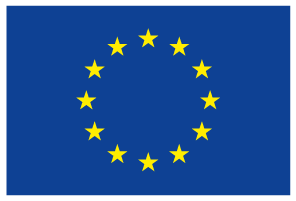Spain
2019
Environmental benefit
Geothermal energy from abandoned coal mines in Spain
Share
Spain
2019
Environmental benefit
Discover this use case online
Grupo Hunosa is a Spanish mining company based in the northern region of Asturias, traditionally specialised in coal mining. Throughout the last decades this sector has experienced a drastic decrease in its workforce, going from more than 25,000 employees in the early 1970s to approximately 700 nowadays. Due to the progressive abandonment of the mining industry in favour of greener energy sources, Hunosa identified the need to diversify their activities: using its mine water as geothermal source for district heating.
The transformation of the Coal Mine into a district heating network was a complex process. For as long as a coal mine is actively exploited, ground water must be pumped out to lower the water table and to avoid inflowing water in the galleries. The desired soil conditions are achieved by constantly pumping from depths that can go up to 600-1000m. Once the mining exploitation ends, pumps are switched off and the mine gradually fills with ground water. First, the larger mining cavities are filled; then, as the load increases, water starts making its way through the clefts produced by the mining activity; finally, the water fills the ground pores. This flooding process is performed until a security level is reached, so it is assured there is no damage to third parties. Otherwise the flood zones could potentially be impacted, and the situation would be quite difficult to predict as it involves a new aquifer modified by mining activity. Once the baseline pumping level is found, the project can begin to take advantage of the pumped water. Due to the water’s characteristics in terms of quality and temperature (23ºC in this specific case), geothermal energy can be optimally generated.
In order to provide the needed flow to the Mieres district heating system two underwater pumps of 90 kW power were installed, which can pump up to 330 m3/h each, located at depths of 85 and 95 meters under the well´s parapet. Pumped mine water goes through a heat exchanger consisting of three high-end units working in parallel. This allows the mine water to exchange its thermal energy with the clean water that is running through the heat pump’s evaporator.
The heat supply for the district heating network can be found in the building where the extraction machine used to be. Now, the building accommodates two heat pumps working with refrigerant R1234ze, arranged in series and working on counterflow. They are used to heat the water up to the required temperature, reaching up to 2MW of total capacity.
 R-ACES has received funding from the European Union’s Horizon 2020 research and innovation programme under grant agreement N° 892429
R-ACES has received funding from the European Union’s Horizon 2020 research and innovation programme under grant agreement N° 892429
Grupo Hunosa is a Spanish mining company based in the northern region of Asturias, traditionally specialised in coal mining. Throughout the last decades this sector has experienced a drastic decrease in its workforce, going from more than 25,000 employees in the early 1970s to approximately 700 nowadays. Due to the progressive abandonment of the mining industry in favour of greener energy sources, Hunosa identified the need to diversify their activities: using its mine water as geothermal source for district heating.
The transformation of the Coal Mine into a district heating network was a complex process. For as long as a coal mine is actively exploited, ground water must be pumped out to lower the water table and to avoid inflowing water in the galleries. The desired soil conditions are achieved by constantly pumping from depths that can go up to 600-1000m. Once the mining exploitation ends, pumps are switched off and the mine gradually fills with ground water. First, the larger mining cavities are filled; then, as the load increases, water starts making its way through the clefts produced by the mining activity; finally, the water fills the ground pores. This flooding process is performed until a security level is reached, so it is assured there is no damage to third parties. Otherwise the flood zones could potentially be impacted, and the situation would be quite difficult to predict as it involves a new aquifer modified by mining activity. Once the baseline pumping level is found, the project can begin to take advantage of the pumped water. Due to the water’s characteristics in terms of quality and temperature (23ºC in this specific case), geothermal energy can be optimally generated.
In order to provide the needed flow to the Mieres district heating system two underwater pumps of 90 kW power were installed, which can pump up to 330 m3/h each, located at depths of 85 and 95 meters under the well´s parapet. Pumped mine water goes through a heat exchanger consisting of three high-end units working in parallel. This allows the mine water to exchange its thermal energy with the clean water that is running through the heat pump’s evaporator.
The heat supply for the district heating network can be found in the building where the extraction machine used to be. Now, the building accommodates two heat pumps working with refrigerant R1234ze, arranged in series and working on counterflow. They are used to heat the water up to the required temperature, reaching up to 2MW of total capacity.
